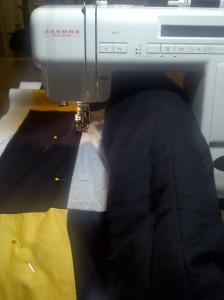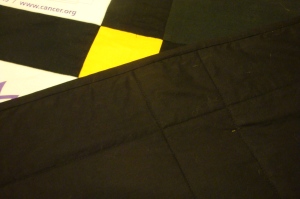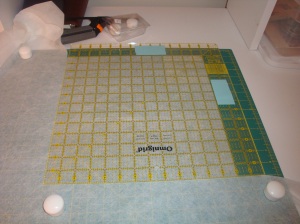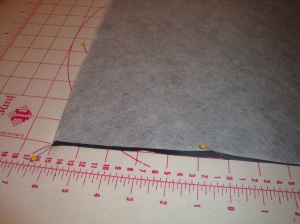So I came across some yarn a few weeks ago and decided to work on some 18in doll hats in the off-season. This may or may not be related to my new subscription to Netflix. Movie and Crafts!! Mostly snug to the head and beret style caps, although Mom is requesting one with a brim, so we’ll see how that will go. For all of these hats I used a “H” size hook and regular weight yarn. More pattern variations on the way!
The first hat is a snug sock cap and inspired by one of the yarn skeins in a camo color. It’s not a color scheme I normally work with, but thought it would go over well in the rural area where I am currently living. So I worked out a pattern. Having the doll handy is helpful for sizing. Tension gauge is about 4sc = 1 in, 5sc rows = 1 in.
Cap with small Camo Pattern
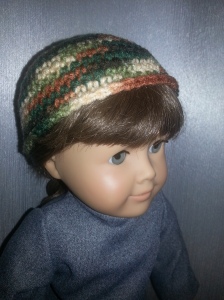 Row 1:
Row 1:
sc 2. dc in first chain and make 11 more dc in the same hole. sls to make a circle.
Row 2:
Chain 1 and sc in first chain. 2 sc in next stitch, 1 sc in next stitch and repeat to complete the row. sls to finish the round.
Row 3:
Chain 1 and sc in first stitch. 2 sc in next stitch, 1 sc in next stitch and repeat to complete the row. sls to finish the round.
Row 4:
Chain 2 and dc in first stitch. 2 dc in next stitch, 1 dc in next stitch and repeat to complete the row. sls to finish the round.
Row 5-6:
Chain 2 and sc in next 3 stitches. 2 sc in next stitch, sc in next four stitch, and repeat to complete the row. sls to finish the round.
Row 7-12:
Chain 2 and sc in first stitch. sc in each stitch to complete the row. sls to make finish the round circle.
Cap with Large Camo Pattern
Row 1:
sc 2. dc in first chain and make 11 more dc in the same hole. sls to make a circle.
Row 2:
Chain 1 and sc in first chain. 2 sc in next stitch, 1 sc in next stitch and repeat to complete the row. sls to finish the round.
Row 3:
Chain 1 and sc in first stitch. 2 sc in next stitch, 1 sc in next stitch and repeat to complete the row. sls to finish the round.
Row 4:
Chain 2 and dc in first stitch. 2 dc in next stitch, 1 dc in next stitch and repeat to complete the row. sls to finish the round.
Row 5:
Chain 2 and dc in next 3 stitches. 2 dc in next stitch, dc in next four stitch, and repeat to complete the row. sls to finish the round.
Row 6-8:
Chain 2 and dc in first stitch. dc in each stitch to complete the row. sls to finish the round.
Row 9:
Chain 2 and sc in first stitch. sc in each stitch to complete the row. sls to make finish the round circle
To Add a Brim
Row 10-14:
Chain 2 and sc in first stitch. sc in each stitch to complete the row. sls to make a circle
Turn hat to where the tail end is inside and flip up row 11-14 to make the brim.





